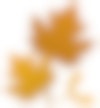Walnut & Maple
In the world of American hardwoods, maple and walnut are legendary.
Walnut
Scientific name: Juglans hindsii
Distribution: California and Oregon
Tree Size: 30-60 ft (9-18 m) tall, 3-5 ft (1-1.5 m) trunk diameter
Janka Hardness: 1,130 pounds of force (lbf) (Janka hardness measures the force required to embed a stainless steel ball ~ ½ inch into the wood. For comparison, Douglas Fir, a very common wood used in framing, has a janka hardness is 660 lbf.)
Distribution: California and Oregon
Tree Size: 30-60 ft (9-18 m) tall, 3-5 ft (1-1.5 m) trunk diameter
Janka Hardness: 1,130 pounds of force (lbf) (Janka hardness measures the force required to embed a stainless steel ball ~ ½ inch into the wood. For comparison, Douglas Fir, a very common wood used in framing, has a janka hardness is 660 lbf.)

According to Roman mythology, Jupiter, king of the Roman gods, lived on walnuts while on earth. How’s that for an endorsement? The botanical name ‘Juglans’ comes from the association with Jupiter. And, it's our most popular material variant. (Sorry, maple). Walnut is a popular wood for use in furniture and other fine woodworking because of its beautiful grain patterns, excellent color and workability. As an added perk, it gives off a nice nutty aroma when cut or sanded.
Our walnut comes from the Western USA. The leaf structure is recognizable, but less well known than maple: symmetric bunches of leaves, usually in odd numbers.
Our walnut comes from the Western USA. The leaf structure is recognizable, but less well known than maple: symmetric bunches of leaves, usually in odd numbers.

Maple
Scientific Name: Acer saccharum
Distribution: Northeastern United States and Eastern Canada
Tree Size: 80-115 ft (25-35 m) tall, 2-3 ft (.6-1.0 m) trunk diameter
Janka Hardness: 1,450 lbf
Distribution: Northeastern United States and Eastern Canada
Tree Size: 80-115 ft (25-35 m) tall, 2-3 ft (.6-1.0 m) trunk diameter
Janka Hardness: 1,450 lbf

Hard rock maple, rock maple, hard maple, sugar maple—many names, one sweet tree. Folks have been tapping the sap of the sugar maple tree for centuries to create maple syrup. It takes 40 gallons of sap to create one gallon of syrup, which is about enough for one pancake breakfast. The wood from the maple tree is as gorgeous as it is hard—it’s one of the most popular with our team. It’s grain patterns are subtle and magical when finished. It’s commonly used for hardwood flooring (including basketball courts and bowling alleys) and baseball bats.
Our maple comes from the Northeastern United States. And, how could we forget the foliage? The crisp days of autumn wouldn’t be the same without the blazing reds and oranges of the maple tree. The leaves are characteristic in shape, and the seeds make great helicopters.
Our maple comes from the Northeastern United States. And, how could we forget the foliage? The crisp days of autumn wouldn’t be the same without the blazing reds and oranges of the maple tree. The leaves are characteristic in shape, and the seeds make great helicopters.













